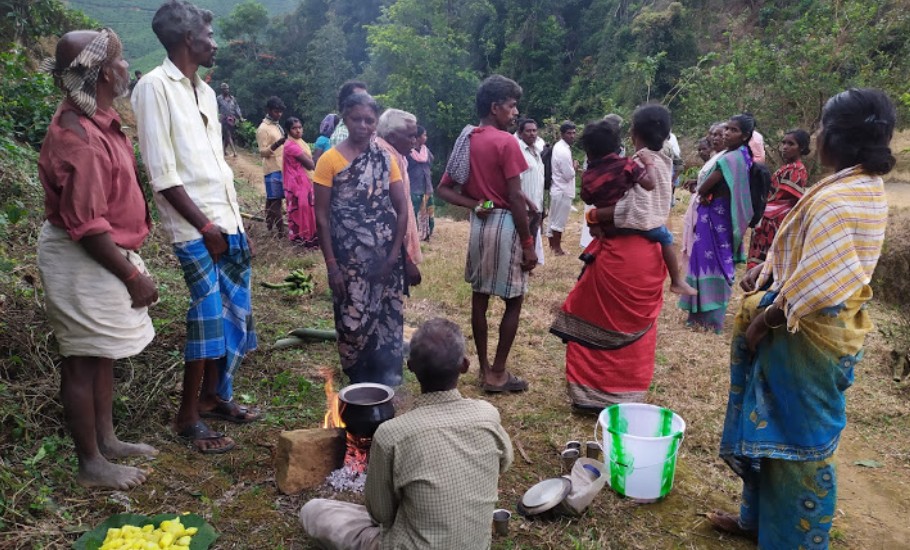
Counting the Faith: Why tribals want a separate religious identity
The Adivasi communities in the Telugu states of Andhra Pradesh and Telangana have joined the chorus of demand for a separate religious identity

The Adivasi communities in the Telugu states of Andhra Pradesh and Telangana have joined the chorus of demand for a separate religious identity. They want a separate column to be introduced for tribal religion in the upcoming 2021 census.
“Our distinct identity is being lost and our constitutional safeguards are being undermined. The Centre should include the option of tribal religion in the Census forms,” said Ramarao Dora, a member of the National Adivasi-Indigenous Religion Coordination Committee (NAIRCC), a coalition of Adivasi rights groups.
Also read: Digital divide exposes India’s neglect of tribal students
According to a tribal researcher and activist P Trinadha Rao, the tribal communities in the country were officially categorised as ‘aboriginals’ from 1871 to 1892 and as ‘Animists’ between 1901 and 1942. However, after independence, Hindu religious identity was attributed to the scheduled tribes and no option was given to them.
The 2011 census counted 104 million Adivasis, accounting for nearly 8.6 percent of the total population. They are scattered across the country and represent heterogeneous practices and traditions.
As per the present practice, a citizen can be slotted into one of the six pre-set religious categories—Hindu, Muslim, Christian, Sikh, Buddhist, and Jain—or be categorised as a member of miscellaneous “other religions.”
“A vast majority of them are registered in the census as Hindus. Nearly 8 million Adivasis are registered under “Other” category. Now, the problem is two-fold. They object to being tagged as “Other” religion and also to being bracketed under Hindu religion because it amounts to undermining the distinct tribal belief systems,” said a research scholar from Osmania University S Ramakrishna.
“We are not idol worshipers. We are nature worshippers. Our social and cultural systems are based on nature,” says Arvind Oraon, a member of the NAIRCC.
Jharkhand shows the way
The growing demand for separate religious identity comes close on the heels of the Jharkhand Assembly passing a government-backed resolution early this month, allowing tribals in the state to identify themselves with a distinct religion. If the Centre approves the new Sarna code, the Census 2021 will have to make space for a new religion.
Jharkhand Chief Minister Hemant Soren, while addressing the special session of the assembly, had said the ‘Sarna Dharam’ of tribals worshipped nature, forests, mountains, and could teach a lot to a world facing problems such as pollution and environmental degradation.
“In the last eight decades, the population of tribals in the state has come down from 38 percent to 26 per cent. This was because the tribals were not added to the census during surveys as they would migrate to other states for non-agricultural employment in February, when the surveys are generally carried out,” Soren said.
A decline in the population of tribals has an impact on the constitutional provisions and policies framed to benefit the tribal communities. The basis for identifying a particular area as Schedule V under the Constitution is dependent on the tribal population. In 2019, there were demands of denotifying Schedule V areas where the tribal population has come down. The recognition of Adivasi Sarna code is expected to address this problem.
Exploitation rampant
There are special provisions in the constitution for protection of tribal communities and preservation of their distinct culture and practices.
For instance, there is a specific law in AP for protection of tribal rights in the scheduled areas. It is called Land Transfer Regulation Act 1 of 1970, popularly known as 1/70 Act. The Act checks the transfer of tribal lands to non-tribals.
However, there have been gross violations of the Act with regard to allotting mining leases in the scheduled areas to non-tribals and allowing non-tribal persons to own ‘benami’ properties.
“Many non-tribal persons own and run mines and hotels and lodges by having a benami tribal as the owner. They reap profits without giving back anything for the development of the tribal areas,” alleged K Surendra, a tribal activist from Visakhapatnam district.
Also read: Tribal boy made to remove AIADMK minister’s footwear, netizens irked
The Telugu Desam Party government in the combined AP made an attempt, in 2000, to amend the act to allow bauxite mining in the tribal-dominated areas of the district, which has more than 550 million tonnes of the ore used to make aluminium.
However, following protests from the opposition, local tribal Organisation’s, and environmental activists, the government was forced to step back.
“The invasion of non-tribal religions into Scheduled Areas is threatening their culture and religious practices. Their demand for separate religious identity is legitimate and constitutional,” says Dr K Sudha, General Secretary of the Human Rights Forum (HRF).
Though the tribal communities follow different customs and traditions, in addition to speaking different languages, they are united in their demand for distinct religious identity.
In the census conducted by the British, tribal communities were classified as ‘Animists’. But, when the time came for the census in 1941, anthropologist Verrier Elwin, who was the advisor to the government of India, conducted a study on Bastar’s Madia tribals and suggested that since they were closer to Shaivism, which is a part of Hinduism, they should be considered as Hindus.


